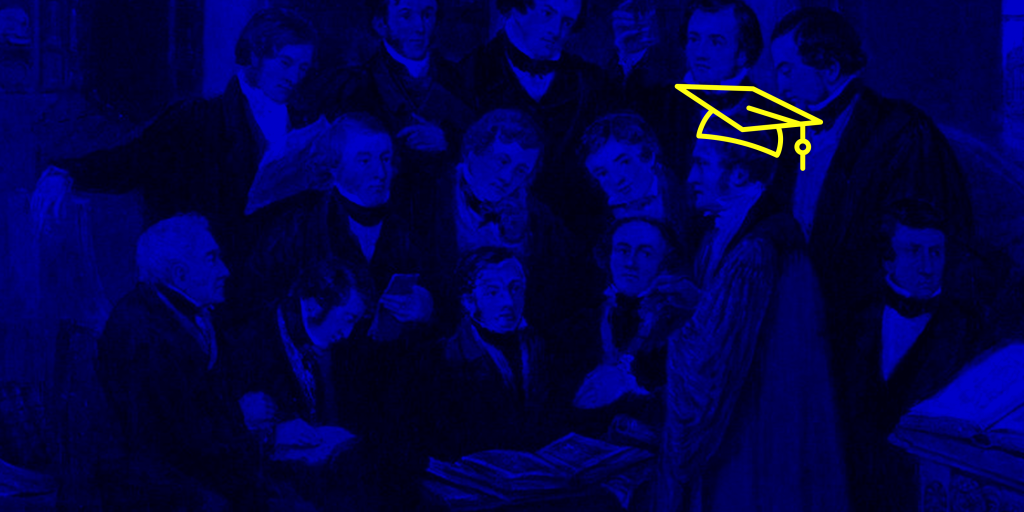2020 wasn’t an easy year for organisations of all shapes and sizes, let alone tertiary institutions. And things don’t look likely to ease anytime soon. But the combination of disastrous international enrolments, extended lockdowns and slashes in funding all merely brought to the surface many of the problems that existed pre-pandemic for Australian universities. So, as we look forward to a new normal, it’s clear these problems are here to stay – unless our institutions are able to use COVID-19 as a springboard to innovate and adapt, like so many other organisations have had to do.
The challenge is, while there’s a strength and a reliability to the notion of an institution, there’s a rigidity and “old-fashioned-ness” that kicks in too. Consider the negative connotations surrounding “institutionalised thinking” and it’s hardly surprising that a fear of (and inability to) change pervades the halls of higher learning. But it’s that exact scenario in other industries – from banking to music to transport – that has seen the rise of disruptors and the rapid fall of giants.
So what can be done? We believe it’s time for Universities to borrow from the marketer’s toolbox. Here are five observations across behavioural design, customer experience and beyond that we think provide some serious food for thought.
Capture vs Nurture
A review of the websites for many of Australia’s leading universities shows they all have a lot to learn in regards to lead nurturing, with most falling over themselves to get the apply now button as up front as possible. As AFFINITY has seen across categories from automotive to tourism, very few prospects enter the sales funnel at the action stage. So having the right user experience and content strategy in place to move prospective students along in a way that maximises conversion is critical.
Celebrating acceptance and managing rejection
Look at the average Australian University’s acceptance and rejection letters side by side and you might be excused for thinking you’re playing a game of spot the difference. Apart from the obligatory “Congratulations!” or “Commiserations …” the pro forma nature of both belies the missed opportunities on both sides.
The competitive nature of the US college system has seen acceptance packages evolve into unboxing moments worthy of YouTube (check out these Stanford and Chicago examples). “But the budget!” I hear you say. Consider the potential lifetime value of a student (a common marketing exercise but something rarely considered by Universities), and the value of that initial experience can be paid back in spades.
But the flipside of this also merits thought – a rejected student has demonstrated brand affinity and intent. By considering how this audience can be nurtured, and ultimately brought in through different pathways, also represents a significant opportunity for universities (but more on that later).
ATAR vs Affirmations
Talk to many teachers, parents and students and you won’t hear too many positive comments about the role of standardised testing systems like ATAR as a means of determining university admissions. As this article captures perfectly, “A test score can’t demonstrate your curiosity, empathy, bravery or resilience.” Back in 2018, AFFINITY conducted a research project around the university admissions experience, with a particular focus on non-school leavers. During this process we came across interesting examples from around the globe where candidates who had not received the mandated entry score – often individuals from disadvantaged or marginalised backgrounds – were asked to write an essay reflecting on why they wanted to complete the course. The interesting observation from anecdotal feedback is that those students who took the time to reflect and affirm their reasons for study often performed better than students who’d come through traditional methods.
Standardised testing isn’t going away anytime soon, but anything that can give a more rounded picture of a candidate’s aptitude will surely help provide a better match between prospective students and their potential futures. Incept Labs is an Australian research consultancy specialising in complex education and organisational systems. They’ve been exploring the gap between our current education system and the 21st century skills required to succeed in the modern workforce – areas like complex communication and problem solving skills, even adaptability and self-management. The result is a microcredentialling strategy that could help Universities identify potential stars who are slipping through the standardised testing filter. Pair it with the nurture approach we discussed above, and you have a revenue-generating, alternative pathway for the not quites and the nearly theres.
The power of experiential marketing
Take a look at some of the materials in the welcome packs for American colleges we’ve linked to earlier, and you’ll see many of them include devices for students to enjoy virtual tours of their new campuses. Budgetary concerns aside, giving prospective students the opportunity to experience the “brand” is critical. And while technology can give a virtual picture, it can also provide the platform for online short courses (or microcredentialling – there’s that word again), that can give prospects a taste of what to expect, while also providing another source of income for Universities.
Know your real competition
One thing we often talk to clients about is helping them understand the broader competitive set they lie within, and how that impacts on their marketing and targeting. And to be frank, if universities think they’re only in the business of offering degrees and competing against other universities, their days are definitely numbered. Market signals across many industries are indicating a shift towards hiring policies based on skills, rather than degrees. Within that, organisations like Google and AWS are developing comprehensive training and certification programs that deliver qualifications without the need for a degree. Indeed Google have clearly indicated you shouldn’t need a degree anymore. Wonder what the Universities think about that?
As we touched on during the introduction, many organisations and industries have struggled to adapt and evolve in the face of a global pandemic few saw coming. With challenges come opportunities though – for those brave enough to take them on. Of course, most universities don’t like to talk about themselves as brands, and certainly don’t like to think of their students as customers. But at a time when training and self-improvement have become ubiquitous (and commoditised), we marketers do have a few useful tricks up our sleeves when it comes to staying relevant and front of mind.
Image Credit : Museum of the History of Science, University of Oxford.


















